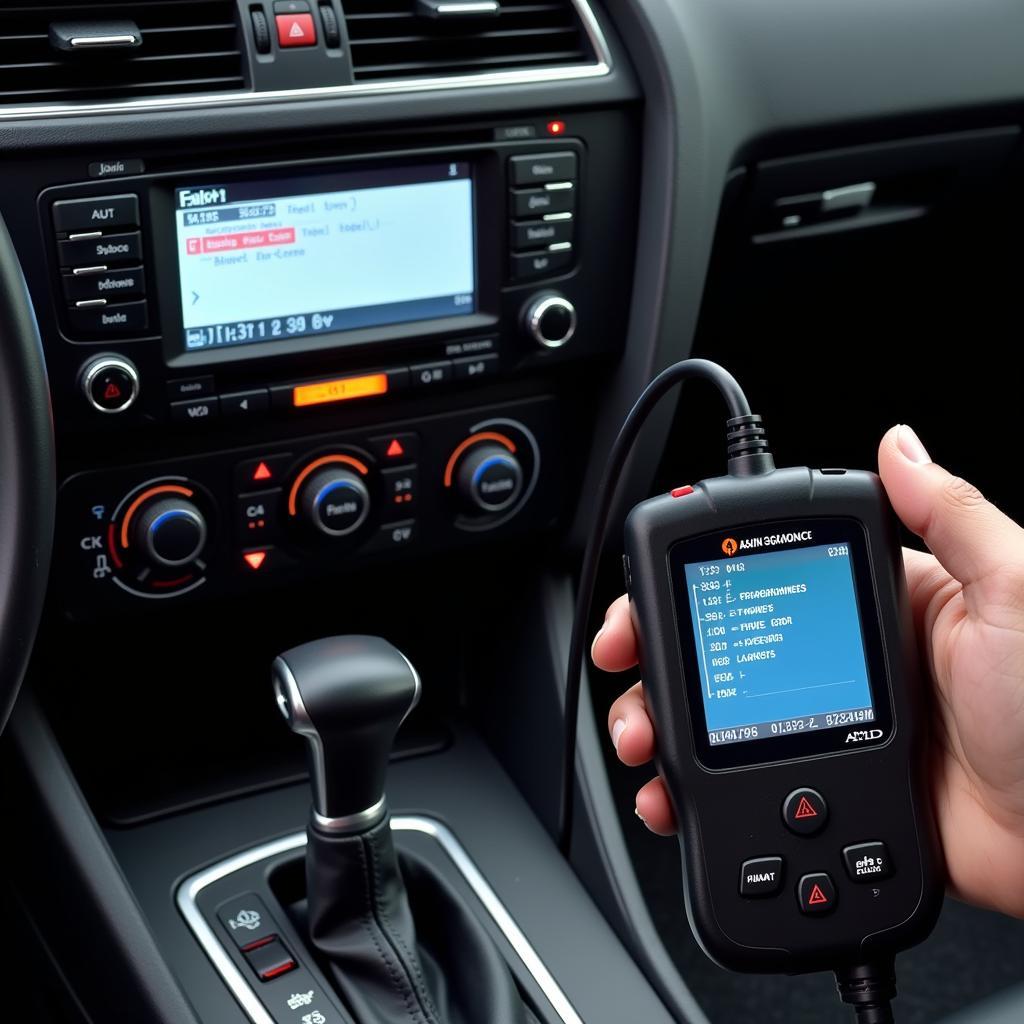The brake warning light on your dashboard is a crucial safety feature designed to grab your attention when there’s a problem within your braking system. Ignoring it can lead to dangerous driving situations and potentially costly repairs. This article will delve into the common reasons your brake warning light might be illuminated and guide you through potential solutions.
Understanding Your Brake Warning Light
The brake warning light, often depicted as a red circle with an exclamation mark or the word “BRAKE,” serves as an early warning system. When illuminated, it signifies one or more issues within your vehicle’s braking system.
Common Causes of a Brake Warning Light
While a glowing brake warning light can be alarming, it’s essential to remain calm and assess the situation. Here are some common culprits behind this dashboard alert:
-
Low Brake Fluid Level: Brake fluid is the lifeblood of your braking system. If the fluid level drops too low, it often signals a leak, which needs immediate attention.
-
Worn Brake Pads: Brake pads naturally wear down over time. When they reach a certain thinness, a sensor within the brake pad will trigger the warning light, indicating it’s time for a replacement.
-
Faulty Brake Lines or Hoses: Leaks can develop in brake lines or hoses due to age, corrosion, or damage. A small leak can quickly escalate, compromising your braking power.
-
ABS Issue: If your vehicle is equipped with an Anti-lock Braking System (ABS), a malfunction within this system can also trigger the warning light. This could involve a faulty sensor or a problem with the ABS control module.
-
Parking Brake Engaged: It might seem obvious, but sometimes the simplest explanation is the most likely. If your parking brake is even slightly engaged, it can trigger the warning light.
Diagnosing the Problem
Determining the root cause of your illuminated brake warning light often requires some investigation. Here’s a step-by-step approach:
-
Check Your Parking Brake: Begin with the simplest solution. Ensure your parking brake is fully disengaged.
-
Inspect Brake Fluid Level: Safely park your car on a level surface and allow the engine to cool. Locate the brake fluid reservoir (refer to your owner’s manual) and check the fluid level. If it’s below the “minimum” line, you likely have a leak.
-
Visual Inspection of Brake Components: Carefully examine your brake lines and hoses for any signs of leaks, cracks, or damage. Look for wet spots or fluid trails near the wheels and within the wheel wells.
-
Consult a Professional: If you’re uncomfortable performing these checks or suspect a more complex issue like an ABS problem, it’s crucial to consult a qualified mechanic or dealership.
What to Do When Your Brake Warning Light Comes On
-
Don’t Panic: Stay calm and assess the situation. Pull over to a safe location as soon as possible.
-
Check Your Surroundings: Be mindful of other drivers and pull off the road away from traffic.
-
Assess the Situation: If you suspect a brake fluid leak or other serious issue, do not attempt to drive your vehicle. Call for roadside assistance.
-
Seek Professional Help: For any brake-related concerns, it’s always safest to seek professional diagnosis and repair.
Remote Diagnostics and Software Solutions
In some modern vehicles, remote diagnostics and software solutions offer advanced troubleshooting and potential fixes for certain brake-related issues.
how to turn off brake warning light on bmw x5
“With the increasing complexity of vehicle electronics, remote diagnostics can sometimes pinpoint specific sensor faults or software glitches within the braking system,” says automotive electronics specialist, David Miller. “In certain cases, we can even upload software updates or recalibrate systems remotely to address certain issues.”
bmw x5 e53 brake warning light
Conclusion
A glowing brake warning light should never be ignored. By understanding its potential causes and taking appropriate action, you can ensure your safety on the road and keep your vehicle’s braking system in optimal condition. Remember, when in doubt, always consult a qualified automotive professional.

